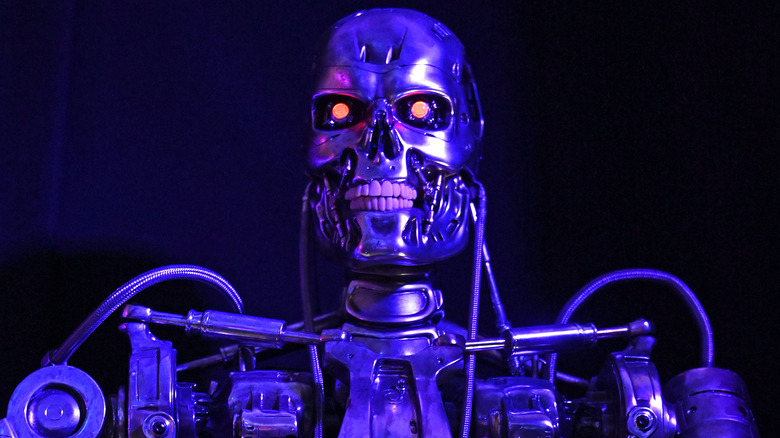The Terminator Was Inspired By James Cameron's Vivid Dream
Having helmed such mega-blockbusters as "Avatar," "Titanic," and "Aliens," James Cameron is one of the most well-known visionary directors of our time. Before any of these, however, he first broke out in Hollywood with 1984's sci-fi, horror, and action film classic "The Terminator," starring Arnold Schwarzenegger as the titular killer robot from the future. Cameron sure knows how to captivate an audience, whether he's using groundbreaking special effects or low-budget hacks.
However, fans may wonder where the director gets the inspiration for the lasting images he has put to screen. In one example, Cameron got inspired to create John Connor in "Terminator 2" by getting high on ecstasy and listening to Sting, but it was something else that inspired him to create "The Terminator" in the first place: a vivid dream featuring the Terminator's endoskeleton, a haunting image that became the impetus for an entire franchise and its complicated timeline.
The story fell into place after Cameron dreamed of a chrome skeleton
In a breakdown of his most iconic films for GQ, director James Cameron discussed how "The Terminator" was inspired by a literal fever dream of a chrome skeleton surrounded by flames, sharing that he woke up with a vision of what became the endoskeleton in "The Terminator." With Cameron being one of the most creative filmmakers in Hollywood, it's no surprise that even his dreams are filled with gnarly imagery rife for putting to the silver screen.
He said of the chrome skeleton, "I always believe that dreams aren't just the image. There's also a kind of narrative metadata that runs with an image, where in the dream you know what the image means." By that logic, Cameron knew that the skeleton's skin had been burned off by the fire, revealing the endoskeleton underneath.
With that image, the story began to unfold for Cameron. He thought to himself when crafting the story around the image, "How could I as a filmmaker trying to break in and get a directing gig, design this film so that it was affordable enough that they would trust it to me?"
Then, Cameron came up with exactly what he needed to in order to make the movie make sense as a low-budget production. He turned to time travel, the age-old method of taking something advanced — and expensive to put on film — from the future and having it arrive in the modern day with a goal to change the past, thus affecting the future. With that, "The Terminator" was born, and Cameron created his own future that hadn't been written yet, learning that there is no fate but what we make for ourselves.

